Abstract
Freter, Rolf (Jefferson Medical College, Philadelphia, Pa.), and Atsushi Ozawa. Explanation for limitation of populations of Escherichia coli in broth cultures. J. Bacteriol. 86:904–910. 1963.—Veal Infusion Broth surrounding a cellophane bag containing a 24-hr culture of Escherichia coli was inhibitory to an inoculum of the same strain when kept under an atmosphere of nitrogen plus CO2. The inhibition could be abolished by addition of glucose or by aeration. When a small inoculum of a dulcitol-positive E. coli strain was introduced into a fully grown (24 hr) static Veal Infusion Broth culture of a dulcitol-negative E. coli, no multiplication occurred. However, the inoculum did grow in the presence of a carbon source (dulcitol) which could not be utilized by the static population. The logarithmic growth rate attained by the dulcitol-positive inoculum under these conditions was independent of the dulcitol concentration. In contrast, the maximal population size was a function of the amount of dulcitol present. Similar results were obtained when sucrose or salicin was substituted for the dulcitol. All strains grew well in filtrates of 24-hr broth cultures with growth rates and maximal populations approximating those attained in fresh broth. It was thus concluded that populations of E. coli in broth cultures were limited by exhaustion of all those carbon and energy sources which could be utilized under the prevailing highly reduced conditions. No evidence of inhibitory metabolic end products was found except in broth supplemented with 1% glucose. Partial inhibition of multiplication was noted in the latter medium even when the pH was maintained between 6.9 and 7.2.
Full text
PDF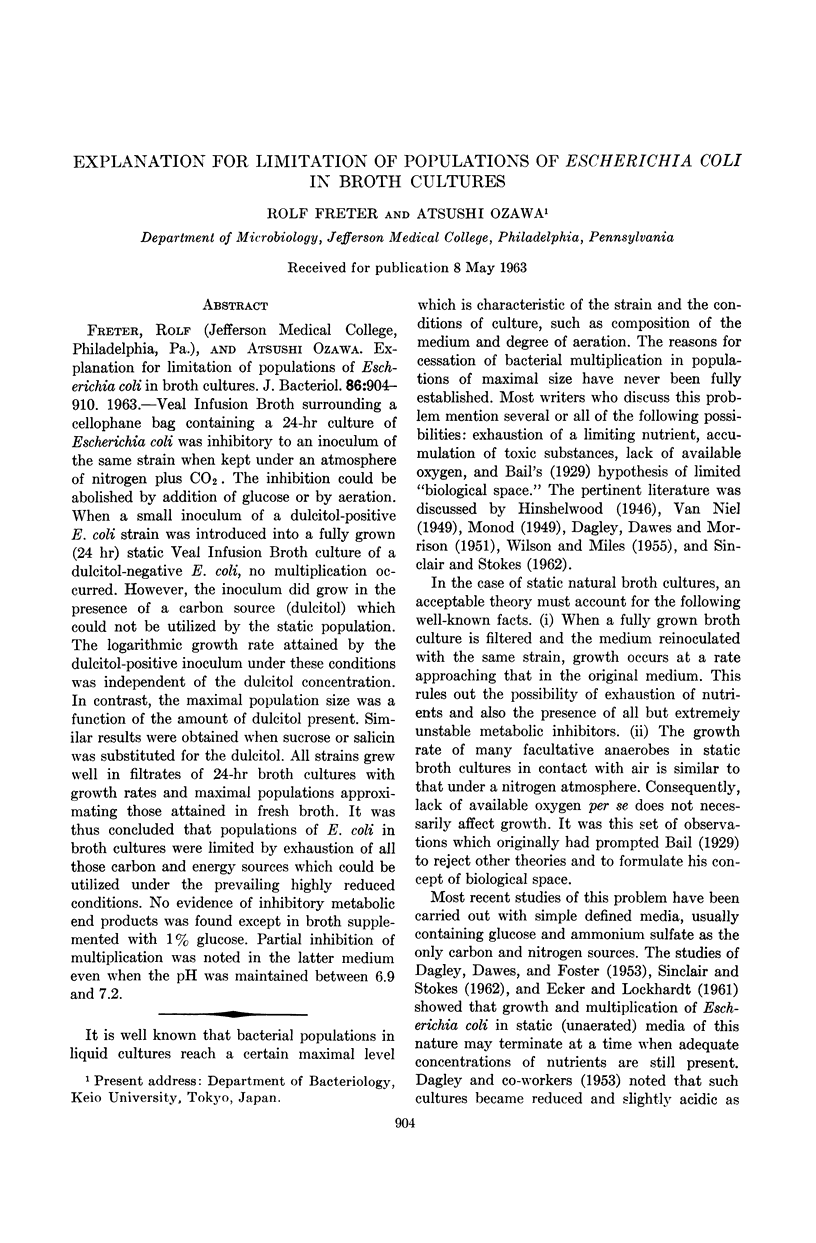

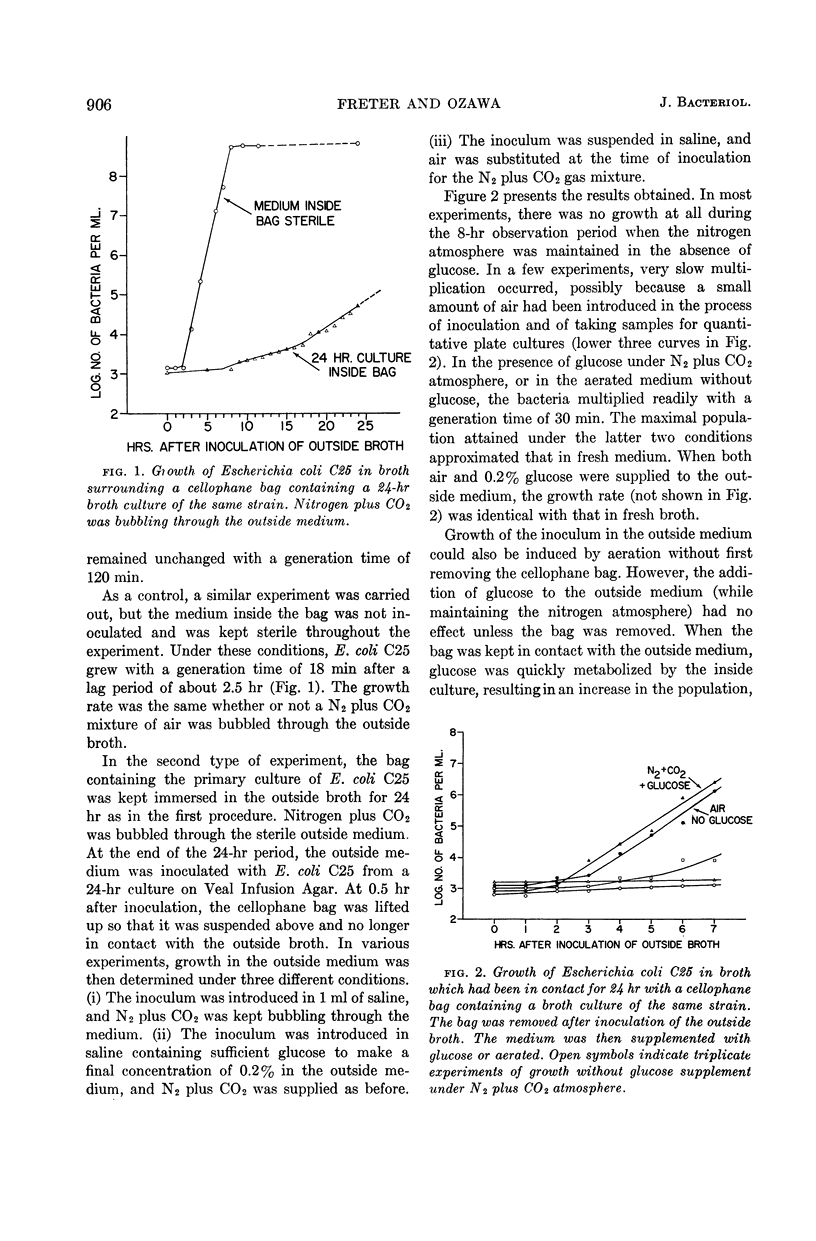
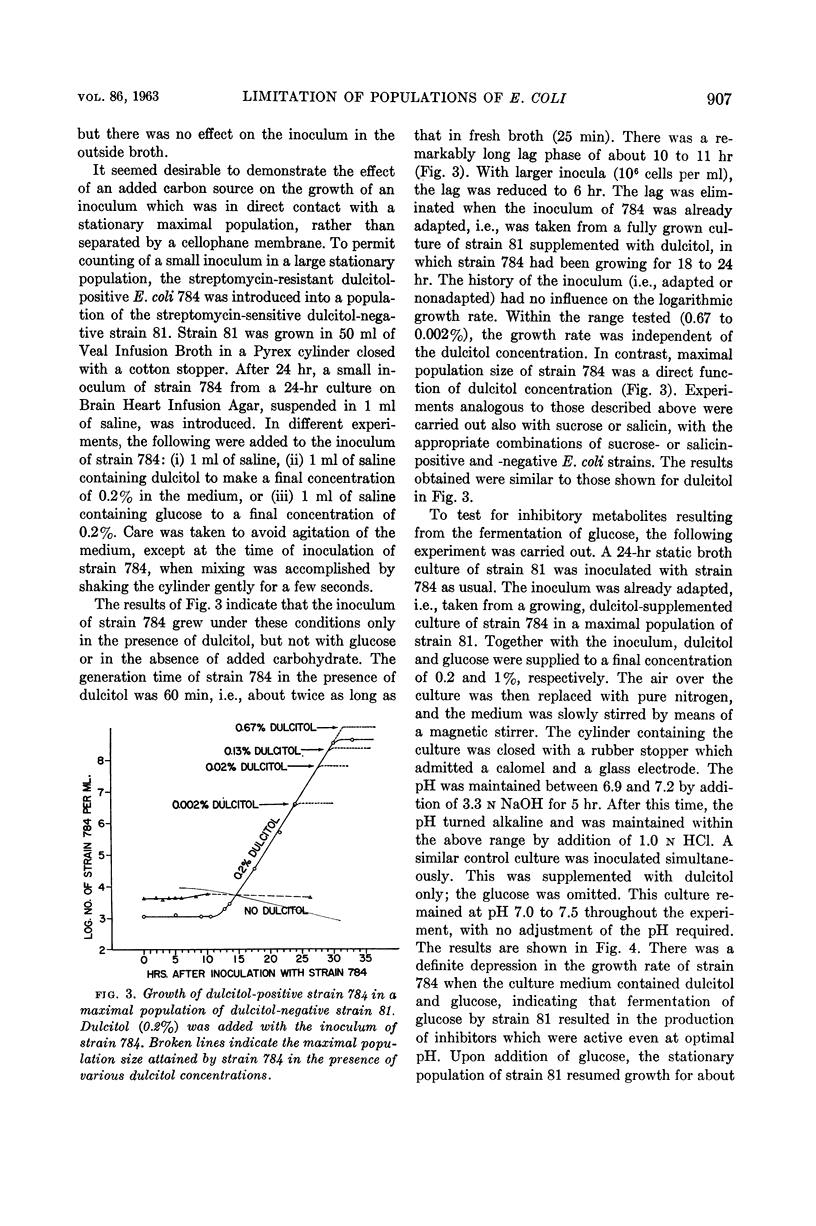
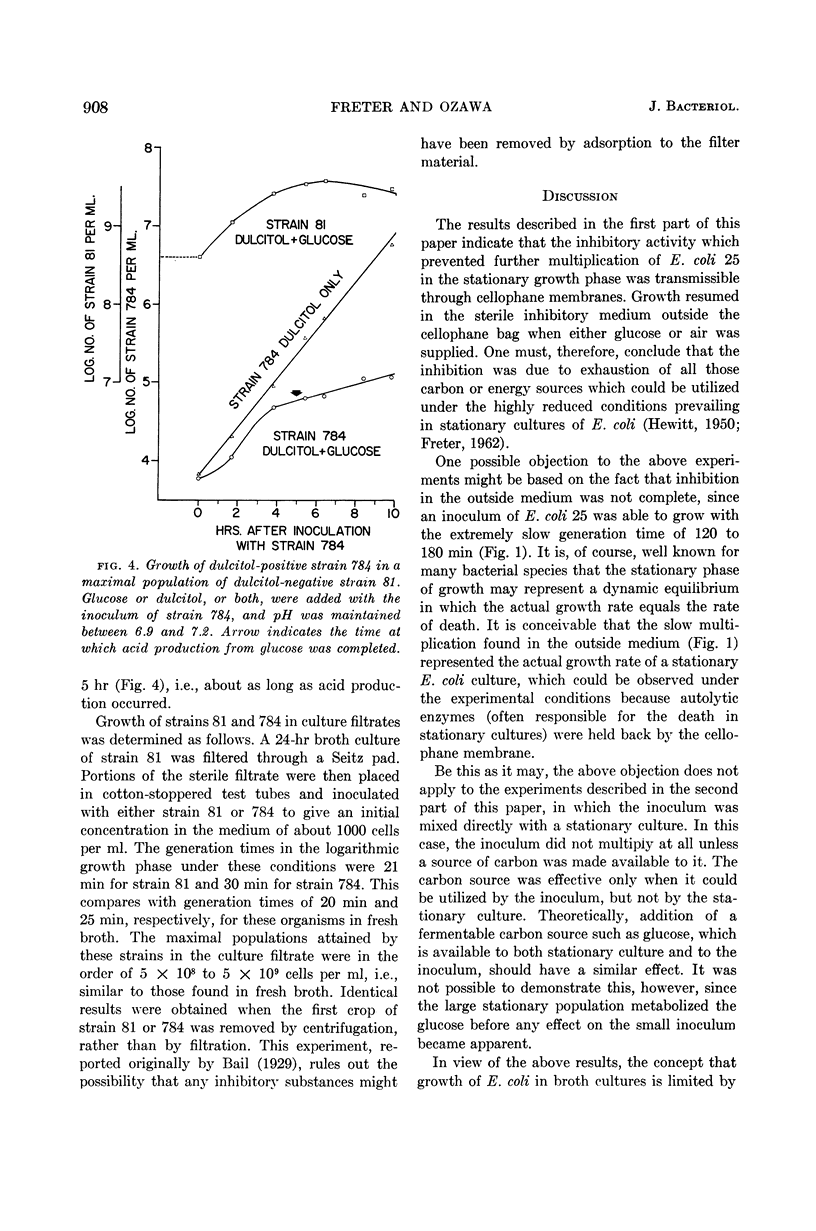
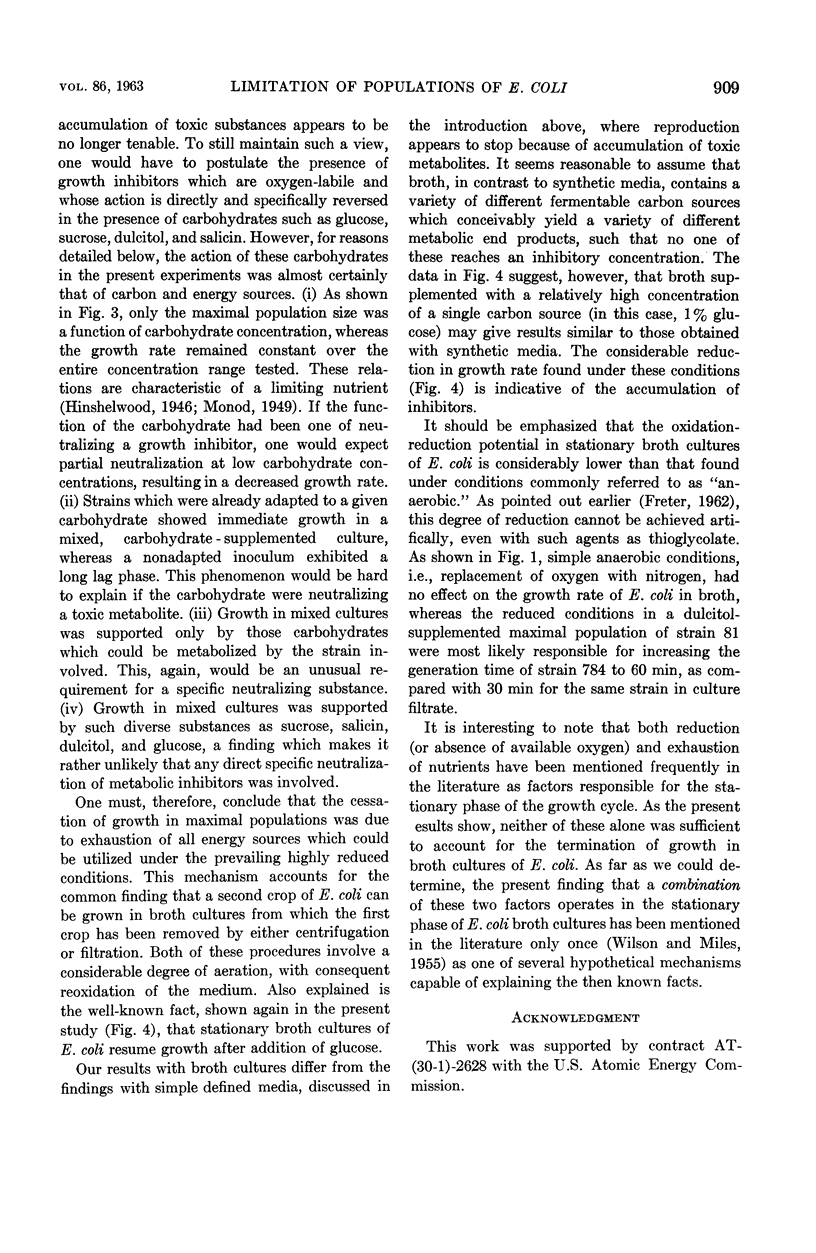
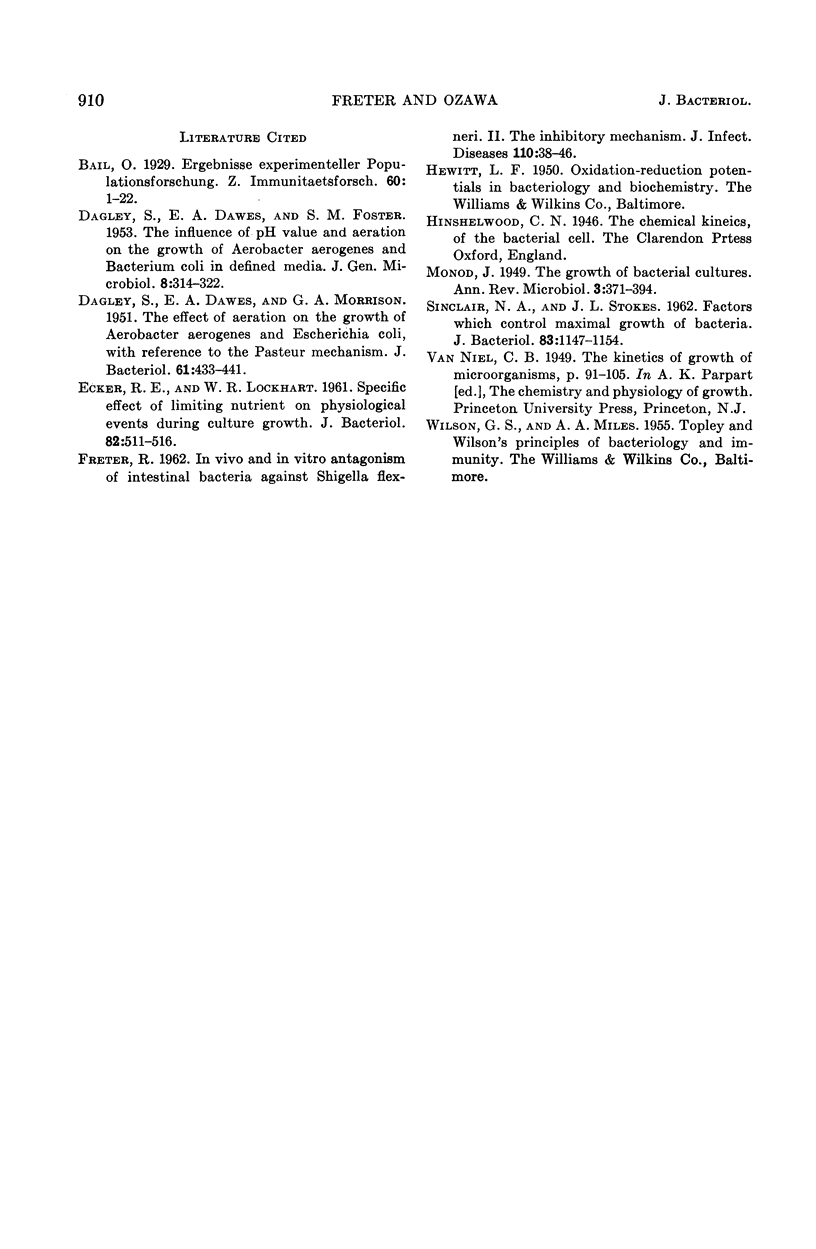
Selected References
These references are in PubMed. This may not be the complete list of references from this article.
- DAGLEY S., DAWES E. A., MORRISON G. A. The effect of aeration on the growth of Aerobacter aerogenes and Escherichia coli, with reference to the Pasteur mechanism. J Bacteriol. 1951 Apr;61(4):433–441. doi: 10.1128/jb.61.4.433-441.1951. [DOI] [PMC free article] [PubMed] [Google Scholar]
- DAWES E. A., FOSTER S. M., DAGLEY S. The influence of pH value and aeration on the growth of Aerobacter aerogenes and Bacterium coli in defined media. J Gen Microbiol. 1953 Apr;8(2):314–322. doi: 10.1099/00221287-8-2-314. [DOI] [PubMed] [Google Scholar]
- ECKER R. E., LOCKHART W. R. Specific effect of limiting nutrient on physiological events during culture growth. J Bacteriol. 1961 Oct;82:511–516. doi: 10.1128/jb.82.4.511-516.1961. [DOI] [PMC free article] [PubMed] [Google Scholar]
- FRETER R. In vivo and in vitro antagonism of intestinal bacteria against Shigellaflexneri. II. The inhibitory mechanism. J Infect Dis. 1962 Jan-Feb;110:38–46. doi: 10.1093/infdis/110.1.38. [DOI] [PubMed] [Google Scholar]
- SINCLAIR N. A., STOKES J. L. Factors which control maximal growth of bacteria. J Bacteriol. 1962 May;83:1147–1154. doi: 10.1128/jb.83.5.1147-1154.1962. [DOI] [PMC free article] [PubMed] [Google Scholar]


